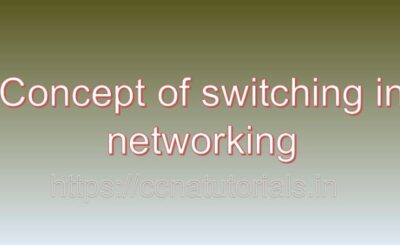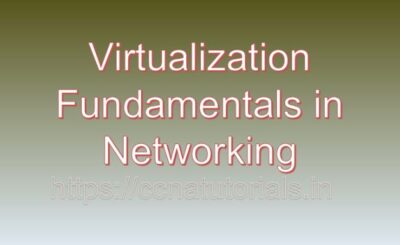Contents of this article
In this article I describe the Power over Ethernet POE for ccna. I can give you an overview of the Power over Ethernet POE for ccna, along with examples. Power over Ethernet POE are the essential device to connect two different devices in a network.
Power over Ethernet (PoE) is a technology that allows network cables to carry both data and electrical power. This capability eliminates the need for separate power cables, simplifying network infrastructure and enabling the deployment of devices in locations where power outlets may be inaccessible or impractical. Let’s explore the role and function of PoE in a network.
Function of Power over Ethernet POE for ccna:
Power Delivery:
The primary function of PoE is to deliver electrical power to network-connected devices over Ethernet cables. PoE-enabled network switches or injectors supply power to PoE-compatible devices such as IP phones, wireless access points (APs), security cameras, and IoT devices. This eliminates the need for separate power adapters or electrical outlets, reducing cable clutter and installation costs.
Data Transmission:
In addition to power delivery, PoE supports data transmission over the same Ethernet cable. PoE-enabled switches or routers transmit data packets to and from network-connected devices, allowing them to communicate with other devices on the network or access resources such as servers, storage devices, and cloud services. PoE follows the same networking standards and protocols as traditional Ethernet, ensuring compatibility with existing network infrastructure and devices.
Compatibility and Standards:
PoE adheres to industry standards such as IEEE 802.3af, IEEE 802.3at (PoE+), and IEEE 802.3bt (4PPoE), which define the specifications and requirements for PoE implementation. These standards specify parameters such as voltage levels, power budgets, cable distances, and device classification methods to ensure interoperability and safety across PoE-compliant devices and equipment.
Power Sourcing Equipment (PSE):
PoE is implemented using Power Sourcing Equipment (PSE), which includes PoE-enabled network switches, routers, and midspan injectors. PSE devices supply electrical power to PoE-compatible devices by injecting power into the Ethernet cable pairs. PSE devices negotiate power requirements with powered devices (PDs) using protocols such as LLDP (Link Layer Discovery Protocol) or Cisco Discovery Protocol (CDP) to determine the amount of power to deliver.
Powered Devices (PDs):
PoE-compatible devices, known as Powered Devices (PDs), include IP phones, wireless APs, IP cameras, access control systems, and IoT sensors. PDs receive power from PoE-enabled switches or injectors and use it to operate without the need for external power sources. PDs comply with PoE standards and specifications to ensure safe and reliable power delivery over Ethernet cables.
Flexibility and Scalability:
PoE provides flexibility and scalability in network deployments by enabling the installation of powered devices in locations where electrical outlets may be unavailable or impractical. For example, wireless APs can be installed on ceilings or walls without the need for nearby power outlets, simplifying deployment in large buildings, warehouses, or outdoor areas. PoE also facilitates the expansion of network infrastructure by adding or relocating powered devices without the need for additional electrical wiring.
Examples of Power over Ethernet POE for ccna:
IP Phones:
PoE is commonly used to power IP phones in office environments. PoE-enabled switches supply power to IP phones via Ethernet cables, eliminating the need for separate power adapters or electrical outlets at each desk. This simplifies installation and reduces cable clutter, especially in large office buildings or call centers where numerous IP phones are deployed.
Wireless Access Points (APs):
Wireless APs often use PoE for power and data connectivity in enterprise Wi-Fi networks. PoE-enabled switches or PoE injectors supply power to APs installed on ceilings, walls, or outdoor locations, allowing them to provide wireless network coverage without the need for nearby power outlets. PoE simplifies AP deployment and ensures uninterrupted operation, even during power outages.
IP Cameras and Surveillance Systems:
PoE is widely used in IP camera installations for video surveillance and security monitoring. PoE-enabled switches deliver power and data to IP cameras installed in indoor or outdoor locations, such as office buildings, parking lots, or retail stores. PoE simplifies camera deployment, reduces installation costs, and enables flexible placement of cameras without the constraints of electrical wiring.
Access Control Systems:
Access control systems, including door controllers, card readers, and biometric scanners, often rely on PoE for power and connectivity. PoE-enabled switches provide power to access control devices installed at entry points, gates, or secure areas within buildings. PoE simplifies access control system installation, facilitates integration with network infrastructure, and ensures reliable operation for controlling access to premises.
IoT Devices and Sensors:
PoE is increasingly used to power IoT devices and sensors deployed in smart buildings, industrial facilities, and smart cities. PoE-enabled switches supply power to IoT sensors, environmental monitors, occupancy detectors, and other connected devices, enabling them to collect data and communicate with centralized control systems or cloud platforms. PoE simplifies IoT deployment, reduces maintenance costs, and enhances scalability in IoT deployments.
Conclusion for Power over Ethernet POE for ccna:
Power over Ethernet (PoE) is a versatile technology that enables the delivery of electrical power and data over Ethernet cables. It simplifies network infrastructure, reduces installation costs, and enhances flexibility and scalability in network deployments. PoE is widely used in various applications, including IP phones, wireless access points, IP cameras, access control systems, and IoT devices, where it provides reliable power and connectivity without the need for separate power cables or electrical outlets.
Understanding the role and function of PoE is essential for designing, deploying, and managing network infrastructures that support modern applications and services. I hope you found this article helpful related to the Power over Ethernet POE for ccna. You may drop a comment below or contact us for any query or suggestions related to the contents of this website.






